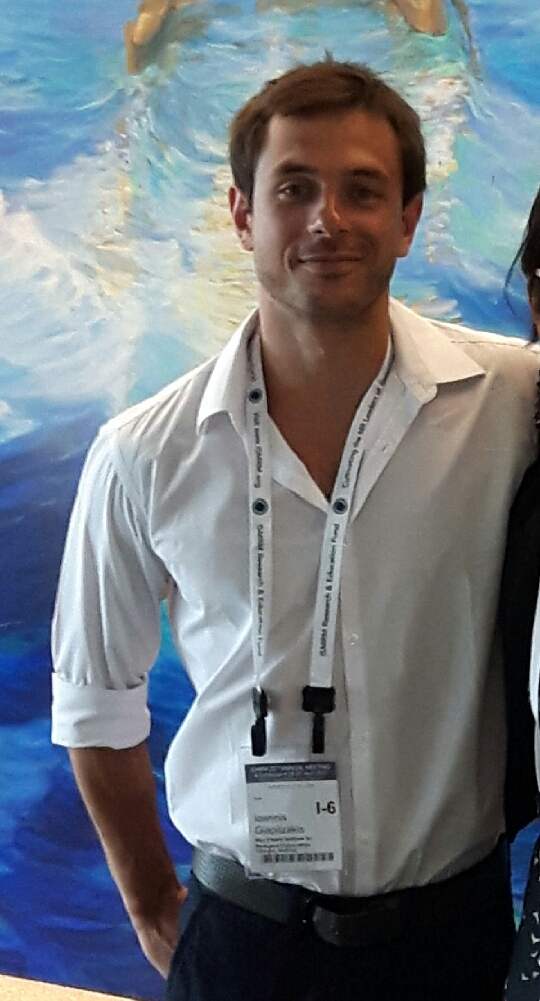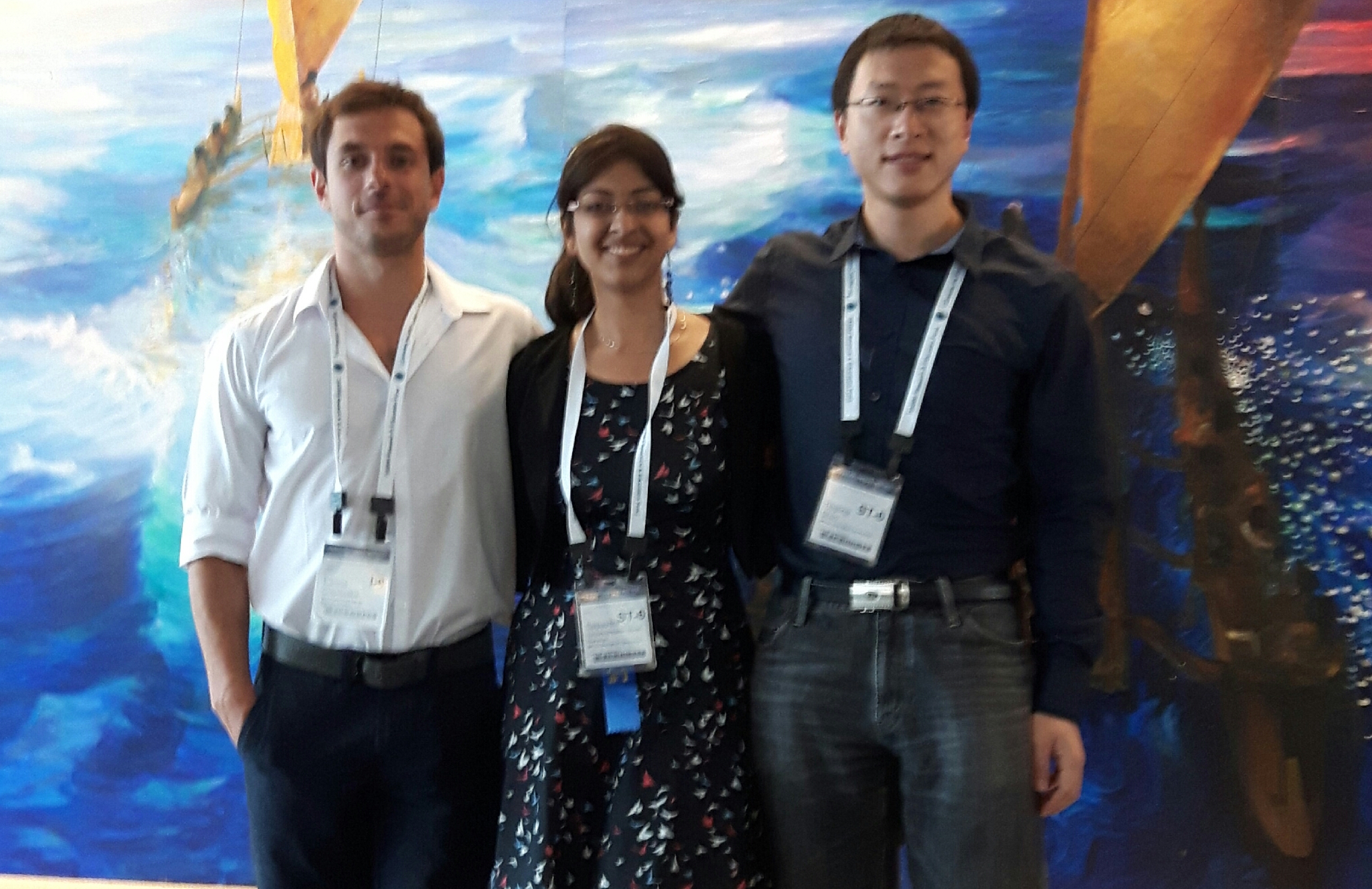

By Mark Mikkelsen
This month we speak with Ioannis-Angelos Giapitzakis and Anke Henning about their recent work on using metabolite-cycled MR spectroscopy to simultaneously acquire metabolite and unsuppressed water spectra at ultra-high field. They talk about some of the technical challenges they faced in their study and where they see the field of MRS moving forward next.
MRMH: Could you please tell us a bit about your background and how you got into MR research?
Ioannis: I did my diploma studies in physics at the National Technical University of Athens but I was always fascinated about the application of physics in medicine. This was my main motivation for doing my bachelor’s thesis in DTI. Then I continued my studies at Imperial College London, where I did my Master’s degree in the combination of DTI and fMRI. In the end, I wanted to do more MR physics so I decided to get into MR spectroscopy. It was a great opportunity for me to join Anke’s group when she offered me a PhD position at Max Planck Institute in Tübingen, since we have this unique whole body 9.4T MRI scanner.
Anke: I did my studies in physics in Eastern Germany. Then I got the opportunity to go abroad for an internship in Brazil, and it was in MRI. That was my first encounter with MRI and I was fascinated. After my physics degree I looked around for PhD positions and started with structural biology at ETH Zürich (specifically in NMR spectroscopy). I then changed labs during my PhD to join Peter Bösiger’s group (also at ETH Zürich) to do MRI. I also learned about MRS from Kurt Wüthrich and Richard Ernst while I was there.
MRMH: So you worked with not one, but two Nobel Laureates.
Anke: Yeah (laughs)
MRMH: On to the paper. Could you explain what is meant by metabolite cycling?
Ioannis: Metabolite cycling allows us to simultaneously detect water and metabolite signals. It was first described by Dreher and Leibfritz in their 2005 MRM article. What we do is use an asymmetric adiabatic inversion pulse incorporated in the standard localization schemes: In one acquisition, we invert the metabolite signals downfield of water; in a second acquisition we invert the upfield metabolite signals. When we add these two acquisitions together we obtain a water spectrum, and when we subtract the two we get just a metabolite spectrum free from gradient modulation sidebands. We can then use the water peak for eddy current correction and frequency and phase alignment. Metabolite cycling can also be used to perform functional MRS studies where we simultaneous detect changes in the metabolite and water signals.
Anke: Very few people are aware of the original paper describing metabolite cycling. It was picked up by one or two groups (such as the group in Bern and ours), and now recently the Oxford group has implemented it for MRSI. The first paper was overlooked because the topic focused on exchange spectroscopy measurements, which is very, very specific. Not everyone was interested, but the technique was hidden in it.

MRMH: Was it challenging to make the custom-built RF head coil you used for this study?
Ioannis: We had an experienced RF coil engineer, Nikolai Avdievich, to help us. The main idea was to reduce the chemical shift displacement error by having high-bandwidth, short-duration pulses. This requires high B1 values. Before, we had an 8-channel coil, but to focus our efforts on the occipital lobe we wanted to implement hardware B1 shimming techniques. And by playing with just the phase using different cable lengths and the power distribution, we could achieve high B1 values in the occipital lobe. Despite the difficulties, together with Nikolai’s great contribution in designing the coil we found this nice solution.
Anke: On another note, we have to build every single coil for 9.4T ourselves because there are no commercially available head coils. We also had to spend two-and-a-half years to convince the IRB committee that these coils are safe – we even put together a 90-page standard operating procedure document for this. Unfortunately, 9.4T is not “push-button”.
MRMH: Does your lab have ideas for moving forward with this metabolite cycling technique?
Ioannis: We have actually already used it for functional MRS, and the first results were really promising because we see a nice correlation between the BOLD effect on the water peak and metabolite changes. There are still some things left to improve, and Anke’s group continues to work in this direction. We have also applied it to characterize the chemical exchange of the downfield metabolites with water.
Anke: The metabolite cycling technique has become the workhorse for any studies we do now at 9.4T because of the nice feature of being able to use the water signal for retrospective phase and frequency alignment. Prospective approaches that could do this would be more hardware-intense and much harder to implement. We also use it in several clinical studies, including in depression and tumors. In terms of specialized applications, we continue to characterize the downfield part of the spectrum in order to understand the CEST contrast. So, basically what we are doing is the “inverse” version of CEST.
MRMH: Finally, your paper shows how technically challenging MRS can be, especially when conducting experiments at ultra-high field. Do you think this is one reason why MRS is not as popular as maybe other techniques in the wider field of MR?
Ioannis: In order to develop MRS techniques you need a solid understanding of MR physics and sometimes you even need an understanding of spin dynamics. The other reason is that in MRS we care about low-concentration metabolites, and not usually about the high-intensity water peak. That is challenging because we have to fulfill more technical criteria in order to optimally detect these weak signals in the brain. I think what is also challenging is the post-processing: there are some really nice techniques but we still have to improve them.
Anke: My view is that the vendor implementations are not capturing the state-of-the-art. What the vendors are implementing is 20 years old, and it is not standardized. The vendors need to invest more in MRS. It is used clinically, but in specialized centers that have MR physicists that can overcome the challenges. There is a lot of discussion in the MRS community on how to make the implementations standard. Also, as long as it sticks to single-voxel spectroscopy, radiologists are maybe not familiar with reading spectra, as it requires a lot of knowledge of physiology, so they struggle interpreting it. The community hopes that once we move from single-voxel spectroscopy to real spectroscopic imaging we will overcome this hurdle.




